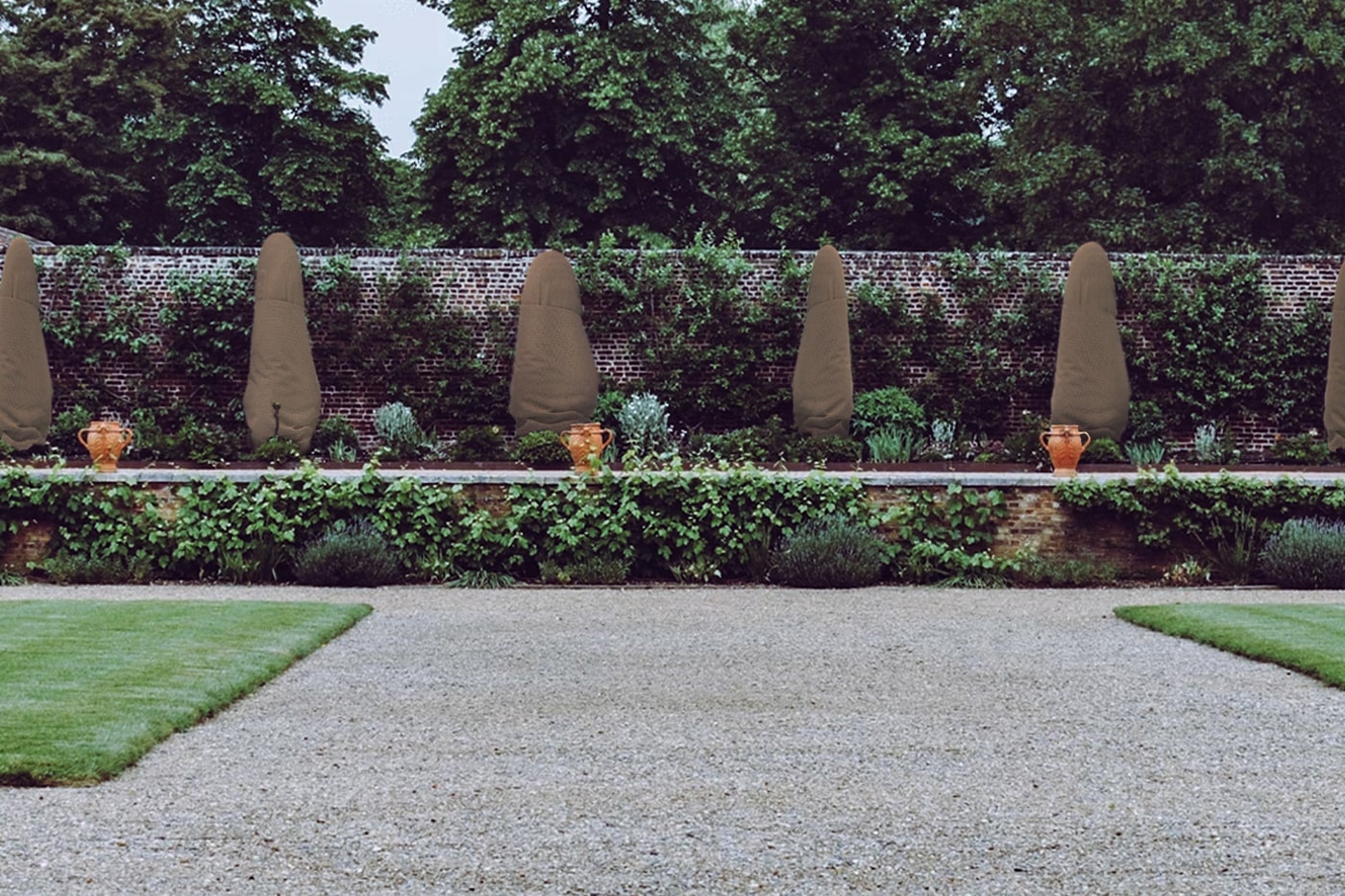As a shade cover, burlap shields plants, keeping them safe and sound so they can grow healthy and strong. The material is made from a rough jute and woven into a fabric called burlap.
One great thing about burlap is that it breaks down naturally over time, so it’s good for the environment. Why should you use burlap in the garden? Here are some tips:
Contents []
What Plants Require Winter Protection?
Dropping temperatures can damage plants. To ensure proper insulation, cover these plants with burlap:
- Tender bulbs: Bulb flowering plants like begonias and freesias could die in the winter cold without a plant cover.
- Temperature-sensitive trees: Even established plants like fully grown trees aren’t impervious to winter cold. Newly planted trees, in particular, need burlap as protection from the freezing cold.
- Tropical plants: Plants that prefer warm, sunny days will need protection from winter cold. Tropical plants should be trimmed and covered with burlap every night.
- Arborvitaes: Evergreens that belong to the Cupressaceae genus are often used as hedging and windbreaks. These are coniferous trees or shrubs, and they often attract deer and other nibbling animals. Covering these plants with burlap helps stave off hungry critters.
How to Keep Plants Warm with Burlap
Keeping plants warm with burlap is a simple way to protect them from the cold. Burlap, a rough fabric made from natural fibers, shields plants from chilly temperatures and harsh winds. How to use burlap to insulate plants during the cold season?
Wrap the plants: When plants are small, they need support so they don’t fall over, and burlap can help. To wrap the plants with burlap, cut the material into pieces large enough to cover the entire plant. Carefully drape the burlap over the plant, ensuring that it covers all parts, including the leaves, stems, and branches.
For smaller plants, you may need just one piece of burlap, while larger plants might require multiple pieces to cover them completely.
Once the plant is covered, secure the burlap in place to prevent it from being blown away by strong winds. You can use garden twine, stakes, or even clothespins to hold the burlap in place. Be gentle when securing the burlap to avoid damaging the plant underneath.
Provide insulation: Burlap acts as a natural insulator, trapping heat close to the plant and creating a warm microclimate. To enhance the insulation properties of burlap, you can add additional layers or padding. For example, you can wrap the plant with plastic sheeting first to create a barrier against cold air and then cover it with burlap for extra warmth.
Cover the root zone: Besides protecting the above-ground parts of the plant with burlap, it’s a must to protect the root zone as well. You can achieve this by wrapping the base of the plant with burlap or by mulching with straw or leaves. This helps to insulate the soil and prevent it from freezing, which can damage the plant’s roots. Another job of burlap is to stop the soil from washing away when it rains a lot.
Ventilate when needed: While burlap provides warmth and protection, it’s essential to maintain proper ventilation to prevent moisture buildup, which can lead to fungal diseases. On mild days, consider uncovering the plants temporarily to allow air circulation. However, be sure to cover them again before temperatures drop at night.
Monitor moisture levels: Cold weather can cause soil to dry out more slowly, so it’s crucial to monitor the moisture levels around your plants. Check the soil regularly and water as needed to keep it moist but not waterlogged. Avoid overwatering, as this can increase the risk of root rot, especially in cold conditions.
Protects from winter burn: The combination of cold temperatures, winter sunlight, and depleted soil moisture increases the risk of winter burn. This damaging condition can kill plants, even established ones. Burlap works as a barrier that prevents winter burn. It protects from strong winds, too much sun, and frost.
Tips On Covering Plants with Burlap Fabric

- Use burlap to keep foraging birds and small animals away from your freshly seeded garden bed. Keep the burlap secure from the edges with landscape pins. This will keep rabbits, voles, and small rodents from nibbling tender seedlings. Birds are smart and tend to peel back any plant cover, so be sure to check the burlap cover every other day to see if some areas need more pins.
- Burlap helps extend the life of organic mulch. Spread organic matter all over the beds then lay the burlap over it. This will prevent dogs, birds, and rodents from scattering the mulch.
- When securing the burlap, use pins to keep the material in place but do not wrap too tightly, or you risk damaging the plant foliage.
- Check the dates to know the average freeze dates in your region. Freeze dates usually happen a week or two after the first frost. Check the weather reports for winter weather warnings. This will help you anticipate and prevent damage to your garden as the temperature drops.
- As temperatures begin to warm up in the spring, gradually remove the burlap from the plants. Start by uncovering them during the day when temperatures are milder, and then remove the burlap completely once the threat of frost has passed. Removing the burlap too quickly can expose the plants to sudden temperature changes, so take your time.
- After the cold season has passed, you can reuse the burlap for other gardening tasks or projects. Burlap is durable and biodegradable, making it an eco-friendly choice for plant protection. You can compost old burlap or use it for weed control, erosion control, or as a mulch in your garden.
By following these simple steps, you can effectively use burlap to keep your plants warm and protected during colder months. Whether you’re growing delicate flowers, shrubs, or vegetables, burlap provides a cost-effective and environmentally friendly solution for winter plant care.



